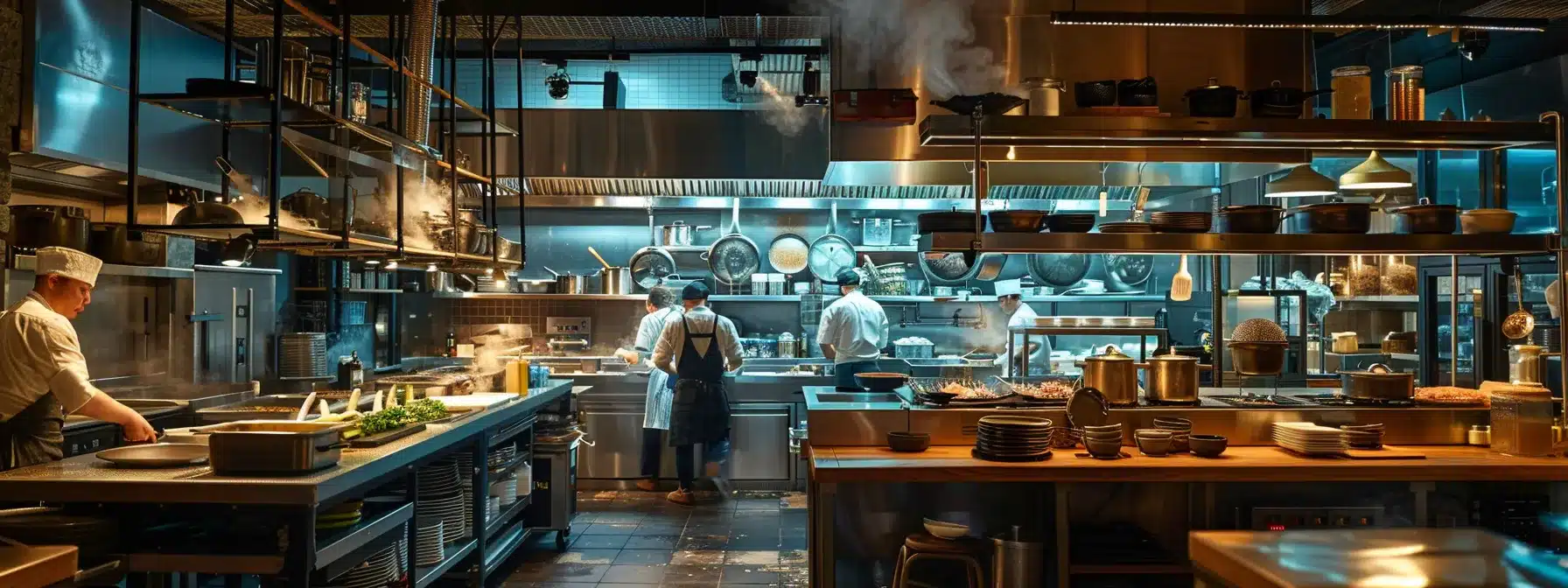Are your restaurant marketing emails struggling to boost customer engagement? A staggering 70% of consumers want to receive marketing emails during specific times. In this article, readers will learn about the importance of timing in email campaigns, discover the best days and times to hit “send,” and explore the benefits of implementing A/B testing. By understanding these tactics, restaurant owners can improve their automated email marketing efforts and drive better results, ultimately solving the common problem of low response rates in marketing campaigns.
Key Takeaways
- Timing significantly impacts open and click rates in restaurant email campaigns
- Leveraging marketing automation tools improves optimal email send times based on consumer behavior
- Avoid common timing mistakes to enhance customer engagement and maximize campaign effectiveness
- Segmenting audiences by time zones leads to improved customer experience and brand awareness
- Regular analysis of performance metrics is essential for continuous improvement in email marketing strategies
Understanding the Impact of Timing on Restaurant Email Campaigns

Timing significantly influences open and click rates in restaurant email campaigns. Understanding the relationship between timing and customer engagement can enhance a restaurant’s reputation and improve customer service outcomes. This section will also address common timing mistakes to avoid, such as ineffective headlines and inappropriate sending times, providing practical insights for optimizing email marketing strategies.
How Timing Influences Open and Click Rates
Timing plays a critical role in the success of restaurant email marketing campaigns. Research shows that consumers are more likely to open emails during specific times of the day, such as late mornings and early evenings. Incorporating marketing automation tools can help restaurants optimize sending times based on customer behavior, ultimately enhancing engagement and positively influencing reputation management.
- Understand consumer behavior for optimal email timing.
- Utilize marketing automation to streamline campaign scheduling.
- Track open and click rates to refine strategies.
- Consider integrating SMS marketing for time-sensitive offers.
- Aim for consistency to build reputation and trust with consumers.
The Relationship Between Timing and Customer Engagement
The timing of an email marketing campaign is crucial in driving customer engagement, as it directly affects when a restaurant’s mailing list receives communications. By carefully analyzing their database and segmenting the market, restaurant owners can identify optimal times for sending out promotional offers or updates, resulting in higher open and click rates. Understanding these dynamics allows restaurants to connect with customers more effectively, ultimately leading to stronger relationships and increased patronage.
Common Timing Mistakes to Avoid in Email Marketing
Common timing mistakes can severely hinder the effectiveness of restaurant email marketing campaigns. For instance, sending emails during off-peak hours often results in lower open rates. Moreover, neglecting the use of analytics to evaluate engagement patterns can lead to missed opportunities for personalization and campaign refinement. Restaurant owners should also be cautious about sending coupons too close to expiration dates, as this may not provide sufficient time for customers to act, thereby undermining the intended impact of the offer.
| Timing Mistake | Impact on Campaign | Solution |
|---|---|---|
| Sending during off-peak hours | Lower open rates | Utilize analytics to find optimal sending times |
| Ignoring customer engagement analytics | Missed personalization opportunities | Regularly review and adjust strategies |
| Sending coupons too close to expiry | Reduced redemption rates | Offer sufficient notice and track customer responsiveness |
Timing matters. Now, understanding your audience will show you the best moments to reach them.
Analyzing Your Audience to Determine Optimal Send Times

Understanding the target audience is essential for optimizing restaurant email campaigns and ensuring effective direct marketing. This involves gathering data on customer behavior patterns, segmenting the audience based on time zones, and utilizing analytics tools for timing insights. Each of these strategies helps enhance the relevance of newsletters, ultimately leading to improved engagement and higher success rates in the marketing channel.
Gathering Data on Customer Behavior Patterns
Gathering data on customer behavior patterns is vital for optimizing restaurant email campaigns. By collecting insights via loyalty programs and integrating automation tools, restaurants can develop a clearer picture of when customers prefer to receive communications. This strategic analysis allows operators to tailor their email marketing solutions, leading to improved engagement and maximizing the effectiveness of each email address in their database.
- Utilize loyalty programs to gather consumer insights.
- Implement automation tools for efficient data collection.
- Analyze patterns to identify optimal sending times.
- Adapt email campaigns based on customer preferences.
- Ensure relevance to boost overall engagement.
Segmenting Your Audience Based on Time Zones
Segmenting an audience based on time zones is a critical strategy in effective email marketing for restaurants. By aligning email sends with the specific time preferences of each segment, restaurants can significantly enhance the customer experience, ensuring that messages are delivered when recipients are most receptive. Research indicates that utilizing this approach not only boosts engagement rates but also strengthens brand awareness, especially when highlighting promotions like gift card offerings, which can attract attention during peak hours.
Utilizing Analytics Tools for Timing Insights
Utilizing analytics tools is essential for restaurants aiming to optimize the timing of their marketing emails. By analyzing customer data, including time zone preferences, restaurants can identify the ideal moments to send emails, ensuring that their call to action captures the attention of recipients when they are most likely to engage. This method not only enhances customer interaction but also improves the return on investment for email campaigns by maximizing the effectiveness of each communication effort.
Understanding your audience sets the stage for effective communication. Next, the focus turns to the specific days and times when restaurant emails can make the greatest impact.
Best Days and Times to Send Restaurant Emails

Identifying the best days and times to send restaurant customer emails is critical for maximizing engagement. Industry insights reveal peak engagement periods, while adjusting send times for weekdays versus weekends can significantly impact open rates. Additionally, understanding seasonal variations and holidays can enhance promotional effectiveness, ultimately strengthening brand loyalty through targeted communications and effective use of landing pages and social media.
Industry Insights on Peak Engagement Periods
Industry research indicates that optimal engagement for restaurant email marketing typically occurs during midweek days such as Tuesday and Wednesday, with peak times around late morning and early evening. Implementing an effective frequency for sending communications is essential; too many emails may overwhelm subscribers, while too few can lead to disengagement. By utilizing email marketing services that analyze customer interaction patterns, restaurant owners can refine their marketing strategy and significantly enhance response rates and customer retention.
Adjusting Send Times for Weekdays vs. Weekends
Adjusting send times for weekdays versus weekends is vital for maximizing engagement in email marketing campaigns. Research shows that consumer behavior often shifts throughout the week; emails sent on weekdays, particularly Tuesdays and Wednesdays, tend to yield higher open rates as potential customers are typically more focused on planning their week. Conversely, sending emails on weekends can reach audiences when they have more leisure time, making timely promotions or special offers more effective. Utilizing an email marketing platform to analyze past performance can further reduce bounce rates and optimize future campaigns by aligning send times with audience preferences.
Considering Seasonal Variations and Holidays
Seasonal variations and holidays offer prime opportunities for restaurants to engage their email list effectively. Recognizing that customers are more likely to plan outings during holidays, restaurant owners can tailor their marketing campaigns around these key dates to maximize revenue. Sending targeted emails with special promotions and menu highlights to a restaurant email list during these times can significantly enhance successful email marketing efforts.
| Season | Holiday | Optimal Email Timing | Targeted Offer |
|---|---|---|---|
| Winter | Christmas | Early December | Holiday meal packages |
| Spring | Easter | Two weeks before | Easter brunch specials |
| Summer | Independence Day | Week before | BBQ promotions |
| Fall | Thanksgiving | Mid-November | Takeaway dinner orders |
Finding the right moment to reach your diners is just the beginning. Next, learn how A/B testing can sharpen your strategy and guide your timing even further.
Implementing a/B Testing to Refine Your Email Timing

Implementing A/B testing is essential for refining email timing strategies in restaurant marketing campaigns. This section will cover setting up effective A/B tests for send times to maximize engagement, analyzing test results using email marketing software like Constant Contact to enhance customer lifetime value, and iterating strategies based on data-driven insights. Each step provides practical tools to optimize campaigns and drive better outcomes at the point of sale.
Setting Up Effective a/B Tests for Send Times
Setting up effective A/B tests for send times in restaurant email marketing automation involves systematically evaluating different times to determine which works best. Restaurant owners can segment their audience based on previous engagement and then send identical emails at varied times to different segments. This approach not only yields valuable insights into optimal email timing but also helps refine overall marketing strategies, ultimately improving customer interaction and enhancing engagement rates.
Analyzing Test Results to Optimize Campaigns
Analyzing test results from A/B testing reveals critical insights that can significantly enhance restaurant email campaigns. By closely examining open and click rates associated with different send times, owners can identify patterns that indicate optimal engagement periods. For example, if emails sent on Wednesday mornings consistently show higher engagement than those dispatched late at night, restaurants can adjust their strategies accordingly, ensuring their communications reach customers when they are most receptive.
Iterating Your Strategy Based on Data
Iterating a restaurant’s email strategy based on data is vital for optimizing engagement and improving outcomes. By continuously monitoring the results from A/B testing, restaurant owners can discern patterns indicating which send times yield the highest open and click rates. This data-driven approach allows for timely adjustments, ensuring that future campaigns are tailored to the preferences of the audience, ultimately enhancing customer interactions and fostering loyalty.
After fine-tuning the timing of your emails through A/B testing, the next step awaits. Automation can take your efforts further, ensuring each message lands right when it should.
Leveraging Automation for Perfectly Timed Emails

Utilizing automated scheduling features allows restaurants to plan email campaigns for optimal times, enhancing open rates. By sending triggered emails based on specific customer actions, restaurants can engage patrons when it matters most. Furthermore, personalizing send times with automation tools ensures that communications align with individual preferences, maximizing effectiveness and driving customer loyalty.
Utilizing Automated Scheduling Features
Utilizing automated scheduling features in restaurant email campaigns allows restaurants to send emails at optimal times based on customer preferences and behaviors. For instance, by leveraging these tools, restaurants can ensure promotional emails reach customers during periods of peak engagement, such as late mornings or early evenings. This approach not only enhances open rates but also aligns marketing efforts with consumer habits, ultimately driving better results and customer loyalty.
Sending Triggered Emails Based on Customer Actions
Sending triggered emails based on customer actions is a powerful strategy that enhances engagement in restaurant email campaigns. By automating communications that respond to specific customer behaviors—such as placing an order, signing up for a newsletter, or redeeming a coupon—restaurants can deliver timely, relevant messages that resonate with their audience. For instance, sending a thank-you email after a purchase can foster loyalty, while reminders for upcoming reservations can improve customer experience and attendance. This targeted approach not only increases open and click rates but also helps build lasting connections with patrons.
- Identify key customer actions for triggering emails.
- Implement automation tools to streamline the process.
- Craft personalized messages that align with customer needs.
- Monitor performance to refine strategies.
- Utilize feedback for continuous improvement.
Personalizing Send Times With Automation Tools
Personalizing send times using automation tools is a strategic approach for enhancing restaurant email campaigns. By analyzing customer behavior data, restaurants can determine optimal send times that align with individual preferences. For example, if a customer consistently opens emails in the evening, automation can ensure that those communications reach their inbox at that specific time, fostering greater engagement and improving response rates.
| Customer Behavior | Optimal Send Time | Expected Outcome |
|---|---|---|
| Emails opened in the evening | 7 PM | Higher engagement rates |
| Responses peak during weekends | Saturday morning | Increased interaction |
| Frequent visits after special promotions | Post-visit follow-up on Mondays | Stronger loyalty |
Automation can send emails at just the right moment, but the work doesn’t stop there. The real insight comes when results are monitored, revealing the best times to adjust your strategy.
Monitoring Results and Adjusting Your Timing Strategy

Monitoring results involves tracking key metrics such as open rates, click-through rates, and customer engagement to assess the effectiveness of email timing strategies. Adapting to changes in customer behavior is essential for maintaining relevance, while continuous improvement through regular reviews ensures that campaigns remain effective. These practices provide restaurant owners with practical insights to optimize their email marketing efforts.
By focusing on these areas, restaurants can refine their timing strategies, respond promptly to customer preferences, and enhance overall marketing success.
Key Metrics to Track Email Timing Effectiveness
To effectively monitor email timing strategies, restaurants should track key metrics such as open rates, click-through rates, and conversion rates. Open rates reveal how well the timing aligns with customer engagement, while click-through rates indicate interest in the content sent. Additionally, conversion rates help assess the ultimate impact on sales, guiding adjustments to ensure that future campaigns resonate more deeply with the target audience.
- Track open rates to evaluate timing effectiveness.
- Analyze click-through rates to gauge content interest.
- Monitor conversion rates to assess overall campaign impact.
Responding to Changes in Customer Behavior
To effectively respond to changes in customer behavior, restaurants must continuously monitor engagement metrics and adapt their email marketing strategies accordingly. For instance, if a drop in open rates occurs following a recent menu change, this may indicate a need to adjust the timing or content of the emails sent out. By leveraging customer feedback and analyzing response patterns, restaurant owners can fine-tune their campaigns, ensuring that communications remain relevant and engaging, ultimately enhancing the success of their email marketing efforts.
Continuous Improvement Through Regular Review
Continuous improvement through regular review is essential for optimizing restaurant email campaigns. By consistently analyzing email performance metrics, restaurant owners can identify patterns and determine which timing strategies resonate best with their audience. For example, reviewing engagement data monthly allows operators to refine their sending schedules and content, ensuring they meet customer preferences and ultimately increase open and click rates.
Conclusion
Optimizing restaurant email campaigns through effective timing tactics is essential for enhancing customer engagement and improving overall response rates. By understanding consumer behavior, utilizing data analytics, and implementing automation tools, restaurants can ensure their communications resonate with patrons at the right moments. Avoiding common timing pitfalls and consistently refining strategies based on performance metrics leads to stronger relationships with customers. Ultimately, mastering the timing of email marketing efforts not only boosts engagement but also strengthens brand loyalty in a competitive marketplace.





